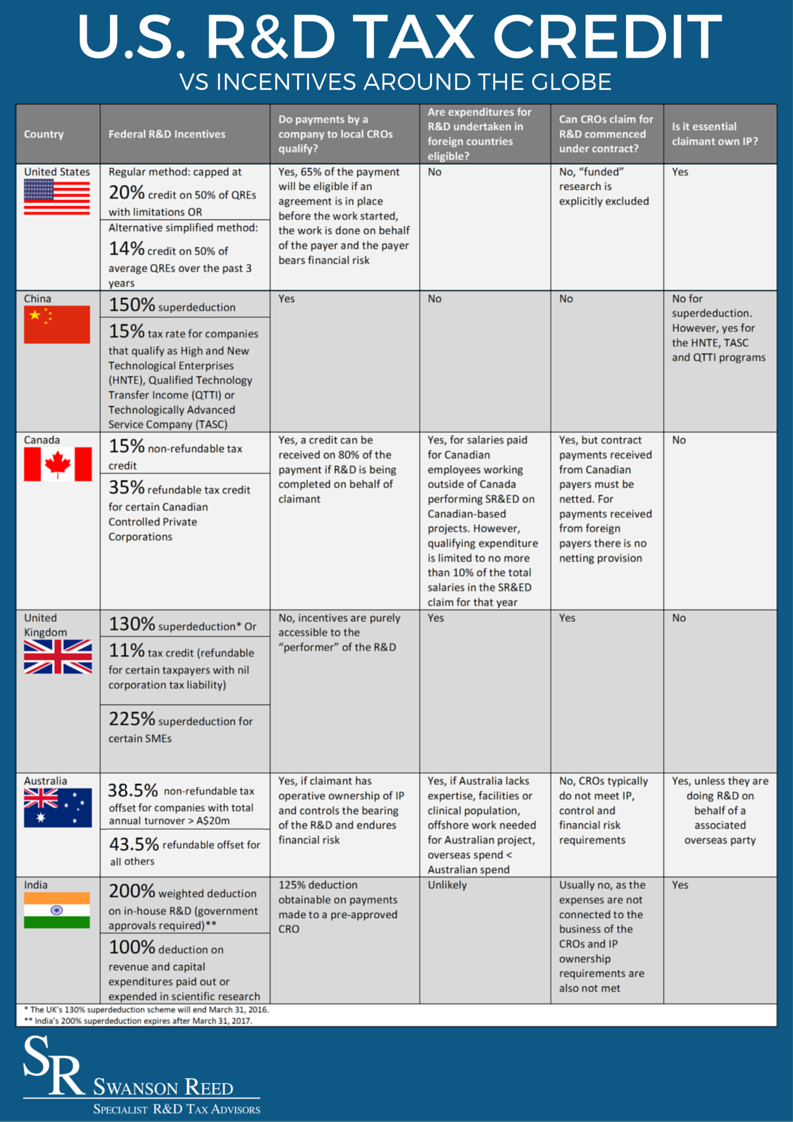A Global Evaluation of R&D Tax Credits
Around the globe, governments are increasing indirect support for business R&D, predominantly by the way of tax credits. For example, by 2011 almost 80 per cent of OECD countries had some form of R&D tax credits in place. In an increasingly global world, R&D investment by a government is believed to be a chief element in boosting skills, jobs and economic growth. As a result, governments across the world have begun to recognize the attraction of tax benefits to spur more knowledge intensive industries and technologies.
Hence, how does the United States R&D tax credit scheme compare to others on offer around the globe?
To answer this question we’ve compiled the table below to provide a more complete picture of global government support for business R&D.
Overall, the United States does have a globally competitive R&D program. In fact, according to the OECD, the United States provided the largest volumes of tax support in absolute terms, followed by China and France. With R&D tax credits being worth US$8.3 billion in the United States. Ultimately, the R&D tax credit program offered in the US can expedite innovation through the development of products, processes and systems. Swanson Reed is a specialist R&D tax firm and has helped many clients across a diverse range of industries. Our specialists can identify and readily scope out the correct value of your claim. If you should be claiming, our R&D Tax specialists will help you write the technical justification, advise you on what does and doesn’t qualify, clarify what costs should be included and support any questions you may have. If you would like any more information on the R&D Tax Credit, please contact us today to find out more.

















